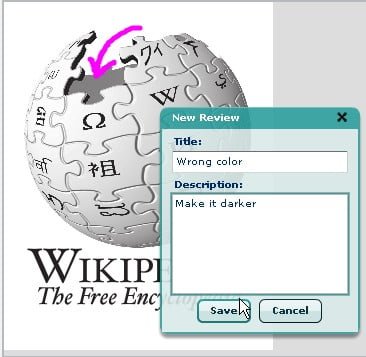In today’s interconnected world, the power of the internet has given voice to millions of users, enabling them to express their opinions and experiences with just a few clicks. From the comfort of their screens, faceless individuals unleash their fury through online critiques and complaints, setting the stage for potential disasters or unexpected opportunities. While it is easy to be overwhelmed by the negative energy that permeates these virtual spaces, it is crucial to approach this realm with a level head and a determined spirit. In this article, we will delve into the art of transforming faceless fury into brilliant opportunities, exploring strategies to conquer online criticisms and complaints. So, fasten your seatbelts—because we are about to embark on a journey that will unveil the true potential hidden within these virtual storm clouds.
Table of Contents
- Unleashing the Power of Online Critiques: A World of Potential Beneath the Surface
- Navigating the Waves of Online Complaints: Insights into Customer Expectations
- Harnessing the Bright Side of Negative Feedback: Turning Criticisms into Growth Opportunities
- Transforming the Tides of Internet Critiques: Practical Tips for Effective Response Management
- Q&A
- Concluding Remarks

Unleashing the Power of Online Critiques: A World of Potential Beneath the Surface
Online critiques and complaints are a double-edged sword for businesses in the digital age. While they can be a source of frustration and anxiety, they also offer immense opportunities for growth and improvement. In a world where customers have the power to voice their opinions on platforms like social media and review websites, it is crucial for businesses to understand the hidden potential beneath the surface and harness it to their advantage.
1. Gain valuable insights: Every critique, no matter how harsh, holds a nugget of truth that can help businesses identify areas for improvement. By paying attention to common complaints or recurring themes, companies can gather valuable data and make informed decisions. For example, if multiple customers criticize the slow response time of a customer service department, the business can invest in additional staff or improve their efficiency to enhance the overall customer experience.
2. Strengthen customer trust and loyalty: Handling critiques with grace and professionalism can transform disgruntled customers into loyal brand advocates. By responding promptly and sincerely to complaints, providing helpful solutions, and demonstrating a commitment to customer satisfaction, businesses can build trust and show others that they genuinely care about their customers’ experiences. This personalized approach not only resolves the particular issue at hand but also leaves a lasting positive impression on other potential customers, potentially attracting new business. It is important to remember that a public display of excellent customer service can turn a negative situation into a shining opportunity.
Real-world examples of businesses successfully leveraging online critiques abound. Take, for instance, the internationally renowned ride-hailing service, Uber. In response to customer complaints about safety concerns, the company introduced features such as a panic button, real-time ride tracking, and driver background checks. These improvements helped regain customer trust, resulting in increased usage and positive word-of-mouth. Another example is the popular e-commerce platform, Amazon. By embracing customer feedback and constantly working to address pain points, the company has become a powerhouse and is often commended for its exceptional customer service and efficient returns policy.
In conclusion, businesses must embrace online critiques and complaints as catalysts for growth rather than sources of distress. By listening to customer feedback, adapting their practices, and fostering strong relationships with their consumer base, companies can transform faceless fury into bright opportunities. The power of online critiques lies in the ability to identify weaknesses, strengthen customer trust and loyalty, and ultimately thrive in an increasingly competitive digital landscape.
Navigating the Waves of Online Complaints: Insights into Customer Expectations
Online complaints can sometimes feel like a relentless tsunami, overwhelming businesses with faceless fury. However, by embracing these critiques and complaints, organizations can transform them into golden opportunities. Here are some insights into customer expectations when it comes to navigating the waves of online complaints:
1. Empathy is key: When customers take the time to leave a complaint online, they are often looking for empathy and understanding. By acknowledging their frustration and offering genuine apologies, businesses can build a bridge of trust and foster stronger customer relationships.
2. Swift responses matter: A timely response can make all the difference in how a customer perceives a business. Whether it’s an immediate solution or a promise to investigate further, addressing complaints promptly shows that the company values its customers and is committed to resolving any issues.
3. Provide resolution options: Customers want their concerns to be heard and addressed. Offering clear and convenient channels for complaint resolution, such as dedicated customer service lines, live chat support, or email communication, can empower customers and make them feel valued.
4. Learn from feedback: Complaints should be seen as valuable feedback rather than personal attacks. By analyzing patterns in complaints, businesses can identify areas for improvement and enhance their products or services. For example, if multiple customers complain about a cumbersome checkout process, the company can work towards streamlining it for a smoother user experience.
5. Surprise and delight: Going above and beyond in resolving a complaint can turn a disgruntled customer into a loyal advocate. Offering a personalized gesture, such as a discount voucher or a handwritten apology note, can help businesses stand out and leave a lasting positive impression.
In the vast ocean of online complaints, businesses have the opportunity to transform adversity into a chance for growth and improvement. By understanding customer expectations, responding promptly and empathetically, and providing resolution options, organizations can turn the tides in their favor and conquer online critiques and complaints. Remember, turning faceless fury into bright opportunities is not just good for customer satisfaction – it’s essential for business success in the digital age.
Harnessing the Bright Side of Negative Feedback: Turning Criticisms into Growth Opportunities
Online critiques and complaints can often feel like a faceless fury, attacking your business from all angles. However, in the midst of this seemingly dark storm lies an incredible opportunity for growth, if only we learn to harness its power. By understanding how to effectively respond to negative feedback and transform it into a positive force, we can not only enhance our reputation but also use these insights to drive meaningful changes.
1. Embrace a Growth Mindset: Instead of viewing negative feedback as a personal attack or a reflection of failure, see it as an opportunity to learn and grow. Approaching criticism with an open mind allows us to extract valuable insights and make improvements that can lead to long-term success.
2. Respond with Empathy: When faced with criticism, take a step back and put yourself in the shoes of the person giving the feedback. Responding with empathy shows that you value their opinion and are genuinely interested in resolving their concerns. Not only does this help in diffusing the situation, but it also creates a positive impression among other potential customers who witness your professionalism.

Transforming the Tides of Internet Critiques: Practical Tips for Effective Response Management
Tips for Effective Response Management
When it comes to managing online critiques and complaints, it’s crucial to approach the task with a strategic mindset. In this section, we will explore practical tips that can help you transform the tides of internet criticism into bright opportunities for your business.
1. Be Prompt: Timeliness is key when it comes to responding to online critiques. Swiftly addressing customer concerns shows that you value their opinions and are dedicated to resolving issues. Whether it’s through email, social media, or review platforms, aim to respond within 24-48 hours.
2. Stay Calm and Professional: It’s easy to let emotions get the best of you when faced with negative feedback, but maintaining a calm and professional tone is essential. Avoid succumbing to defensive or aggressive language. Instead, respond with empathy, understand the customer’s perspective, and strive to find a solution that satisfies both parties.
3. Personalize Your Responses: To ensure your customers feel heard and valued, personalize your responses instead of relying on generic templates. Address them by name, acknowledge their specific concerns, and offer personalized solutions. This human touch can make a significant impact on the customer’s perception of your brand.
4. Offer a Solution: Merely acknowledging criticism is not enough; it’s essential to present a solution or action plan. Providing a clear path forward shows that you are committed to rectifying the issue and improving your products or services.
5. Take the Conversation Offline: In cases where the complaint requires detailed discussion or personal information, it’s advisable to take the conversation offline. Offer your contact information or request the customer’s contact details, ensuring privacy and allowing for a more thorough resolution process.
Q&A
Q: What does it mean to “turn faceless fury into bright opportunities” when it comes to online critiques and complaints?
A: “Turning faceless fury into bright opportunities” refers to the process of transforming negative online feedback, typically expressed in the form of complaints or critiques, into valuable opportunities for growth, improvement, and positive engagement with customers or users.
Q: Why is it important to address online critiques and complaints?
A: Addressing online critiques and complaints is crucial because it allows businesses or individuals to listen, acknowledge, and respond to their customers’ concerns. By doing so, they demonstrate a commitment to customer satisfaction, fostering trust and loyalty. Additionally, addressing critiques and complaints can lead to valuable insights, helping to identify areas for improvement and refine products or services.
Q: How can one effectively address online critiques and complaints?
A: Effectively addressing online critiques and complaints requires active listening, empathy, and prompt responses. It is essential to acknowledge the issue and show a genuine willingness to understand and resolve it. Providing personalized solutions, maintaining transparency, and even turning a negative experience into a positive one can greatly contribute to successfully addressing online critiques and complaints.
Q: How can businesses or individuals leverage online critiques and complaints to their advantage?
A: Businesses or individuals can leverage online critiques and complaints to their advantage by utilizing them as opportunities for growth and improvement. By actively addressing these concerns, they can enhance products/services and strengthen their brand reputation. Moreover, engaging in constructive dialogues with customers or users can help build better relationships and inspire loyalty.
Q: Can you provide examples of successful transformations of online critiques and complaints?
A: Certainly! For example, a software company that receives negative feedback about a bug in their product can turn it into an opportunity by promptly thanking the customer for their input, addressing the issue, and providing a fixed version along with a heartfelt apology. This not only resolves the problem but also showcases their commitment to customer satisfaction and reinforces their reputation for reliable software.
Another case could be a restaurant owner who receives a scathing online review about poor service. By responding promptly, offering a sincere apology, and inviting the customer for a complimentary meal to make amends, they not only rectify the situation but also turn the critic into a loyal advocate who appreciates the restaurant’s dedication to customer happiness.
Q: What are the potential benefits of actively engaging with online critiques and complaints?
A: Actively engaging with online critiques and complaints allows businesses or individuals to connect directly with their customers and build trust. By valuing their customers’ opinions, addressing concerns, and implementing necessary improvements, they can enhance their products or services, increase customer loyalty, and ultimately boost their reputation in the online community. Additionally, this engagement can act as a form of free market research, enabling businesses to stay ahead of the competition and identify trends or issues early on.
Q: Are there any risks associated with addressing online critiques and complaints?
A: While addressing online critiques and complaints brings numerous benefits, there are some risks involved. There is always a possibility of further negative feedback or a miscommunication arising from these interactions. Additionally, it is essential to handle critique or complaint response with care, maintaining a respectful and positive tone throughout. However, by approaching these challenges with empathy, accountability, and transparency, the risks can be mitigated and transformed into opportunities for growth.
The Conclusion
In the realm of online interactions, where anonymity often breeds faceless fury, it takes resilience and a lightness of heart to transform criticism into a gateway of bright opportunities. We have explored the ability to conquer the virtual battlefield of critiques and complaints, armed with an unwavering spirit and an open mind.
As we navigated the ever-evolving landscape of the digital world, we discovered that behind every comment, every complaint, lies a lesson waiting to be embraced. In the face of adversity, we urged ourselves to rise above the negativity, to see beyond the initial sting, and to identify the hidden gems that lie within the sea of discontent.
Boldly, we ventured into the realm of online critique, where harsh words and scathing remarks can often overshadow the positive aspects of our endeavors. We recognized that there is value in understanding the root causes of these criticisms, seeking the grains of truth that might lie buried within the rhetoric of frustration. Armed with this understanding, we learned to reframe our perspective, utilizing these critiques as stepping stones to strengthen our foundations, to improve our services, and to shape our path towards excellence.
With each complaint encountered, we realized that the power of transformation lay not only in ourselves but in our ability to respond with empathy and grace. Our journey involved reaching out, connecting with those who expressed their grievances, and treating their concerns not as mere obstacles but as opportunities for connection and resolution. The anonymous wrath became an invitation to engage, to understand, and to humanize the faceless voices that echoed within the digital sphere.
In this pursuit, we discovered that great possibilities arise from acknowledging and addressing concerns with genuine care. By aligning ourselves with the interests and needs of our audience, we engaged in a dance of mutual understanding, stepping into a realm where growth is nurtured through harmony, collaboration, and mutual respect. Complaints became catalysts for innovation, as we transformed adversity into inspiration, discord into synergy, and dissent into bonds of trust.
Our journey through the labyrinth of online critiques and complaints has taught us that resilience, adaptability, and compassion are invaluable companions in this labyrinthine world. By transcending the immediate emotional response and seeking the larger picture, we can transform the very foundations of our existence, harnessing the energy of adversity to ignite the flames of progress.
So, as we conclude this expedition, remember that the faceless fury of online critiques need not shroud the bright opportunities that lie beneath. Approach each critique as a chance to learn, a chance to evolve, and a chance to build bridges of understanding. In this way, we will not only conquer the virtual battlefield but also embark on a journey that illuminates the path to growth, connection, and boundless possibilities.

